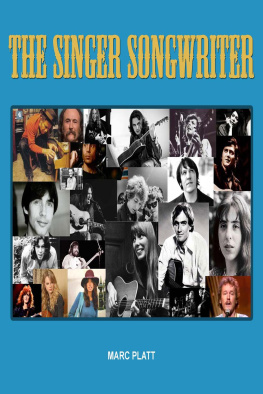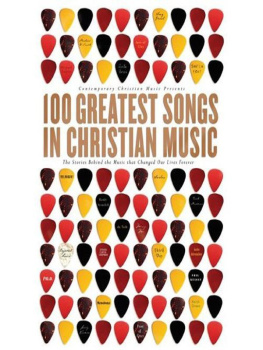1001 SONGS
YOU MUST HEAR BEFORE YOU DIE
GENERAL EDITOR ROBERT DIMERY
PREFACE BY TONY VISCONTI

A Quintessence Book
First published in the UK in 2010 by Cassell Illustrated
a division of Octopus Group Limited
Endeavour House, 189 Shaftesbury Avenue
London, WC2H 8JY
www.octopusbooks.co.uk
An Hachette UK Company
www.hachette.co.uk
This eBook first published in 2011
By Octopus Publishing Group Ltd
Copyright 2010 Quintessence
Reprinted in 2011
All rights reserved. No part of this publication may be reproduced, stored in a retrieval system or transmitted in any form or by any means, electronic, mechanical, photocopying, recording or otherwise, without the permission of the copyright holder.
ISBN-13: 978-1-84403-684-4
QSS.1SON
This book was designed and produced by
Quintessence
230 City Road
London EC1V 2TT
www.1001beforeyoudie.com
| Project Editor | Philip Contos |
| Associate Editor | Bruno MacDonald |
| Editors | Irene Lyford, Fiona Plowman, Frank Ritter |
| Editorial Assistant | Simon Ward |
| Designer | Jon Wainwright |
| Design Assistant | Tom Howey |
| Production Manager | Anna Pauletti |
| Editorial Director | Jane Laing |
| Publisher | Tristan de Lancey |
The moral right of the contributors of this Work has been asserted in accordance with the Copyright, Designs and Patents Act of 1988
CONTENTS
PREFACE
By Tony Visconti, Record Producer and Musician
In the beginning there was the single, a stand-alone recording of a song. The phonograph, invented by Thomas Alva Edison in 1877, had a cylinder, slightly larger and thicker than the cardboard core of a toilet roll, that stored about two minutes of music or recitationthat was the limit of the medium. Made of wax compounds, cylinders lasted for just a few dozen plays, until they were worn smooth. As for the sound, it was tinny and awful, degenerating more with every playing. Cylinders made of plastic, a superior medium, later became the standard and lasted longer, although the music still sounded as if it was recorded in a chip-frying factory. Undismayed, the public was hooked on buying singles.
Edison was smiling all the way to the bank when an upstart inventor, Emile Berliner, introduced a new form of recording and playback medium: the flat platter. Revolving at seventy-eight revolutions per minute, the disc came in basic black, just like Mr. Fords Model T. Berliner could argue that his platter produced a superior sound (it did), and also that it offered an additional two minutes of music on its reverse side. Despite the obvious merits of Berliners invention, Edison foolishly defended his cylinder format to the point of bankrupting his company as he tried to maintain its status as the only recorder in town. Berliner not only defeated Edison (as did Nikola Tesla, the inventor of alternating current), he also invented, inadvertently, the musical B-sidebut more about that later.
My father, Anthony, was an avid collector of singles. As a boy I would watch his 78s spin at a dizzying speed and try to freeze the label with a blink of my eye. Music poured out of our record playershort jazzy tunes by the Glenn Miller Orchestra, the Dorsey Brothers (Tommy and Jimmy), close-harmony singing by The Pied Pipers (lead singer Frank Sinatra), even Egyptian singles sung in Arabic from Arab immigrant shops on Atlantic Avenue in Brooklyn. I would observe Dads ritual of sliding a precious black shellac-based disc out of its sleeve and carefully placing it on the turntable, see the delicate descent of the tone arm into the lead-in grooves, and breathlessly anticipate the moment when the loud scratchy surface noise suddenly became musicthis was an experience I would relive countless times in my life, despite having been told not to even think of touching my dads records or his record player.
I had to learn the hard way to respect this delicate recording medium. At the age of four I was suddenly inspired to hold the brittle10-inch shellac discs parallel to the floor, release them, and delight in seeing them smash into many small pieces. I had decimated a serious part of his collection in the space of five minutes when my not very well padded posterior became the recipient of several hard whacks, accompanied by a flood of tears, not just from me but from him, too.
On a brighter note my father loved comical music records. In the 1940s he gleefully played me the surreal parodies of contemporary pop songs by bandleader Spike Jones and his City Slickers. My favorite was the comic song All I Want for Christmas Is My Two Front Teeth, in which the tooth-whistling singer (trumpeter George Rock) made me laugh by the way he sang the word Christmas, enunciating both Ss with a canary-like trill. But when I heard Joness Cocktails for Two, I instinctively knew that the band could not play their instruments and produce those garish sound effects at the same time (I was already a young and enlightened ukulele player). Something fishy was going on in the studio and I wanted to know what it was and how to do it. Suffice to say, Ive spent countless hours in recording studios since then, trying to perfect the arcane art of doing something fishy!
The first record I bought for myself was Fats Dominos Blueberry Hill. By this time I was responsible enough to operate Dads phonograph, and I played the shiny black 78-rpm single until I had memorized every nuance, from the eight solo piano notes of the intro to the snare-drum flourish that brings the last dying chord to an abrupt halt. I played the second side even more, because I never heard that song on the radio. The B-side was Honey Chile, sung with such a thick New Orleans accent (for me at the time) that I couldnt decipher the first line of the song, although I memorized it phonetically. This single was my property, my cultural property! It was a wonderful start to my small collection of 78-rpm singles, which grew to include Tutti Frutti by Little Richard and Flying Saucer by Buchanan and Goodman (I was still enjoying comical music). I would play these three records (and the B-sides) incessantly after school, and often my dad would come home from work and bellow: Shut that damn record off! My fathers music was my music, but my music was not my fathers musicclearly!
Shortly after I started the addictive hobby of record collecting, I became a victim of the now all-too-familiar format wars. Almost unbreakable vinyl was the new medium, with a durable surface that could stand the wear and tear of the tone arm to a far greater extent than its predecessor. Vinyl singles were smaller and more compact than shellac, and many of them fitted into a highly portable box with a little plastic handle that I still own. I was an only child, and my 45s were my constant companions. I bought singles by my singing guitar heroes: Elvis Presley, Chuck Berry, Buddy Holly, Buddy Knox, and Mickey (Baker) & Sylvia (Vanderpool), whose Love Is Strange (B-side No Good Lover) was the epitome of guitar tone. Working on my guitar, I gleaned everything I could from Mickey Guitar Bakers style by playing that 45 over and over again. In 1957 I met my hero outside the stage door of the Brooklyn Paramount. Mickey and Sylvia were on the bill, playing up to six shows a day. Mickey, who was rushing out after the morning show, probably to get a cup of coffee and a jellyroll donut, kindly stopped and signed my album sleeve. He even gave me a guitar pick, which I kept in my wallet for several years until I used it at a gig and broke it.












